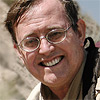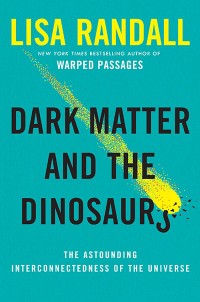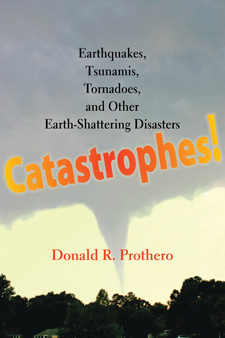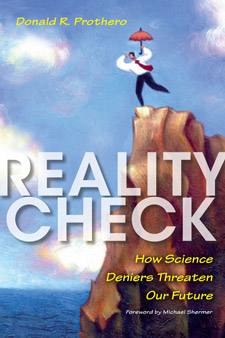Dark Matter and Periodic Mass Extinctions? Not So Fast!
The great tragedy of science—the slaying of a beautiful hypothesis by an ugly fact.
In recent weeks, physicist Lisa Randall has been promoting her new book, Dark Matter and the Dinosaurs. She even spoke about her latest work for the recent meeting of the Skeptic Society Science Salon on November 22. Naturally, any book which talks about such sexy topics as astronomy and dinosaurs is guaranteed to get lots of fawning press coverage, with little or no scrutiny from the scientific community. Nearly all the coverage and reviews of the book I have seen are either by science journalists without the appropriate background, or by astronomers and physicists. They were a bit skeptical about whether there was any strong evidence for her idea that waves of dark matter contributed to mass extinctions on earth, but could not rule it out. To her credit Randall made clear that she is proposing a hypothesis to be further tested, not a fully complete theory for which she is confident is correct. Like the good scientist that she is, Randall emphasizes that she could be wrong.
This is not a review of the entire book, which is generally well written, and explains the complicated physics of dark matter and other topics is a clear and lively fashion. Unfortunately, the urge to tie her topic to sexy ideas like periodic extinctions and impact model for the end of the dinosaurs got the most press coverage, even if the book itself is more cautious about these topics. Still, it was a mistake to invoke the outdated and debunked ideas like the notion of periodic impacts causing extinctions, which seriously detracts from the credibility of an otherwise solid piece of science writing.
TAGS: astronomy, dark matter, dinosaurs, extinction, fossils, paleontologyPilgrimage to Bigfoot Country
Order the hardcover from Shop Skeptic
Order the hardcover from Amazon
Order the Kindle Edition
Order the Apple iBook
Last month I was doing geologic field work in northern California, and I had the opportunity to travel across the Klamath Mountains. Naturally, I saw many of the signs of Bigfoot Country. There’s a tacky “museum” and store down in Garberville near the Humboldt Redwoods, right off Highway 101, and there are Bigfoot merchandisers everywhere in the Klamaths. But the epicenter of Squatcher country (as the hunters of Sasquatch call themselves) is the Willow Creek-Bluff Creek area, in the central Klamaths.
Willow Creek is a tiny little town deep in the forests of the Klamath Mountains, with a population of only 1743. Logging has been its main source of income in the past but today it is tourism. And Willow Creek is truly Bigfoot Central. Almost every business in town caters to Bigfoot tourism. There is a Bigfoot Motel, Bigfoot Books, Bigfoot Contracting Supply, Bigfoot Rafting Company, and Bigfoot Restaurant, just to mention a few with “Bigfoot” in their business name. Every Labor Day weekend (this year on Sept. 5, 2015), Willow Creek hosts its annual “Bigfoot Daze” festival. Most famous of all is the Willow Creek-China Flat Museum, with a room dedicated to its collections about Bigfoot. The exhibits are not that impressive: mostly hand-typed signs and labels, lots of fading newspaper clippings and fuzzy photographs, various casts of “Bigfoot prints,” and so on. The town also boasts numerous sculptures of Bigfoot in many places, including a more than twice-life-size statue outside the Bigfoot Museum, and redwood carvings outside the local Patriot gas station and the Visitor Information Center. There’s a Bigfoot Avenue and Little Foot Court, as well as a Patterson Avenue (and this town only has a few streets). Just like the areas around Loch Ness, and Lake Champlain (home of “Champ”), and other places in the cryptozoology lore, cryptid-tourism is big business, and supports a significant portion of the economy in a town as remote and tiny as Willow Creek.
TAGS: Bigfoot, cryptozoology, Sasquatch, Willow CreekA New Ice Age? No, Bad Journalism Run Amok
A few weeks ago, the internet was abuzz with claims that scientists were predicting a “new Ice Age” around 2030. Many media outlets ran misleading pictures of people walking through frozen wastelands, and other wintry scenes. Naturally, the climate deniers immediately jumped on this as proof that global warming wasn’t going to happen, or that scientists can’t get their stories straight. My email and Facebook were flooded with questions from people asking me whether it was true, and what did it all mean?
This story is a classic case of bad journalism run amok. The original source was just a re-published press release of a talk not yet given by one solar scientist, Dr. Valentina Zharkova. She works on solar magnetism, but has absolutely no training in atmospheres or climate science. It is just an initial report of a new mathematical model for the magnetic field behavior of the sun. It is not a peer-reviewed study, nor is it even published yet, so it hasn’t had the slightest scientific scrutiny. Contrary to all the breathless reporting, it shows no actual data for how much solar radiation will be emerging in 2030—just that the magnetic activity of the sun would be different. Magnetic activity of the sun does not translate into a simple prediction of how much radiation reaches the earth. And nowhere in this unreviewed press release does the scientist make the actual claim that there will be a new ice age in 2030. That was entirely made up by the media which completely misinterpreted and misreported the minimal information in the study.
TAGS: climate change, ice age, journalism, scienceScience Affirmers
In this blog and in my book Reality Check, I’ve frequently complained about science-denying politicians pushing policies which are in direct conflict with scientific evidence and reality: the creationist agenda in public schools, distorting history to serve the religious extremists, or acting on behalf of their energy industry donors to deny the reality of climate change and attack the EPA, NASA, NOAA, the NSF, and legitimate scientific organizations. So it gives me great pleasure to praise public figures who stand up for science and science-based policy, and pass laws that benefit people and the environment, rather than powerful special interests and the science deniers of every stripe. Nowhere is this more apparent than my home state, California.
Immunizing Children
Last week, the state legislature passed, and Governor Jerry Brown signed into law a no-nonsense measure that made childhood vaccinations mandatory except for extraordinary medical circumstances. No more will the anti-vaxxers in my state be able to use their “personal beliefs” to endanger other children through their own foolishness and believing debunked garbage from the internet. The problem was a severe one in our state, with its huge population and large number of anti-vaxxers driven by Hollywood celebrities like Jenny McCarthy and Jim Carrey. The medical community has been battling the anti-vaxxers for years with limited success, until serious outbreaks of measles at Disneyland, and other deadly outbreaks of rubella and whooping cough started killing people. But State Senator Richard Pan, M.D., who sponsored the bill, managed to get it through both houses of the Legislature by big majorities (despite a handful of GOP naysayers who thought in impinged on “personal freedom and privacy”). Then Gov. Brown signed it as soon as it reached his desk, and the bill is now law.
TAGS: anti-vaxxers, climate change, creationism, evolution, mass extinction, public policy, science denialIt Coulda Been a Contender: A Paleontologist Reviews Jurassic World
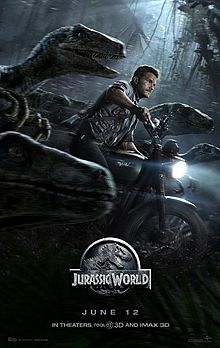
Ever since Jurassic World (watch trailer) came out two weeks ago (and is now the fastest movie ever to make a billion dollars), people have been asking me again and again what I thought of the movie as a vertebrate paleontologist, and someone who has written often about dinosaurs, and even done some research on them. My usual short answer is: “A big disappointment: it’s an OK monster movie, lousy science. And it could have been SO much better.” This has been the consensus opinion among nearly all the scientists and science bloggers (especially dinosaur paleontologists) who have commented on it, including John Long, Jim Kirkland and Thomas Holtz, Brian Switek, Kyle Hill, John Conway, Mark Loewen, Darren Naish, and many others.
TAGS: cinema, dinosaurs, movies, paleontology, science fictionMonkey Business

The spider monkey, a typical platyrrhine. (Image by Lea Maimone, via Wikimedia Commons. “Geoffroy’s Spider Monkey [Ateles geoffroyi].” Used under CC BY-SA 2.5 license.).
Is “Brontosaurus” Back? Not So Fast!
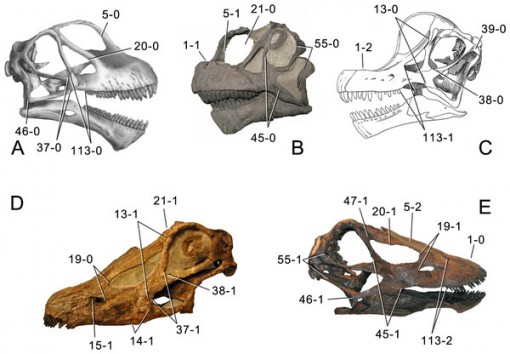
Skulls of different sauropods, showing the distinction between the long-snouted diplodocines,and the short-faced brachiosaurs and camarasaurs. (From Tschopp et al., 2015, Fig. 1)
The past few weeks have been abuzz with the media reaction to a just-published study by Emanuel Tschopp, Octavio Mateus, and Roger B.J. Benson analyzing the diplodocine sauropod dinosaurs and figuring out their classification and relationships. The study itself is a landmark in careful anatomical work, analyzing the problem specimen by specimen (a total of 81 specimens used) rather than generalizing based on previous clusterings of specimens, and looking at far more anatomical evidence than any previous study. Naturally, the press missed the significance of the study completely, and focused on just one minor point: they resurrect the genus “Brontosaurus” for specimens that had been lumped into Apatosaurus since 1903. ALL the publicity, and all the reactions of the non-paleontological reporters and readers was focused on this rather trivial issue, which is not important to real paleontologists in any way (except that we always get asked about it by the general public). Most of the reaction by sauropod paleontologists who were interviewed were generally favorable, but others were more cautious. Almost all agreed that is the most thorough work on the subject written to date, and it will be the foundation on which all future analyses will be built. Similar reactions could be found on the SVPOW (“Sauropod Vertebra Picture of the Week”) website, which is the main forum for discussion by specialists and amateurs about sauropods. (Even better: it was published in an open-access online journal, with access to the peer-reviewers’ comments as well!).
TAGS: Brontosaurus, classification, dinosaurs, media literacy, paleontology, taxonomyReflections on Earth Day
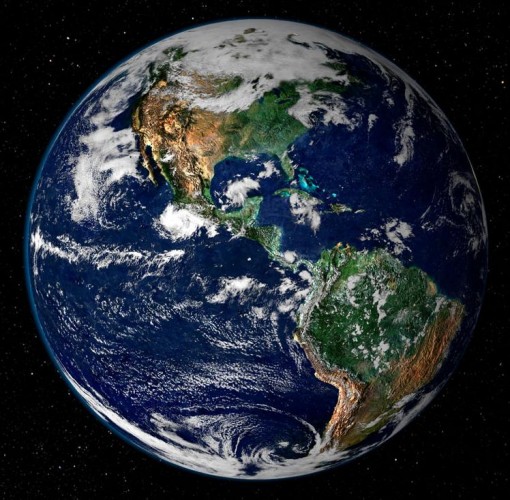
Earth, the “pale blue dot”, the tiny green planet in a vast cosmos. It is our only home, and if we foul it, we will never get another chance. (Image created by Reto Stöckli, Nazmi El Saleous, and Marit Jentoft-Nilsen, NASA GSFC; courtesy NASA).
Today is the 45th anniversary of the first Earth Day, held on April 22, 1970. Originally proposed by activist Denis Hayes in 1969, it quickly gained momentum and was officially inaugurated by Wisconsin Senator Gaylord Nelson the following year. Nelson chose the date because it was late enough in the spring that people would be able to hold outdoor rallies and it would not conflict with most campus spring breaks or the Easter and Passover holidays. It also happened to fall on the day after the birthday of famous conservationist John Muir. (Although Nelson didn’t know it, it also fell on the 100th anniversary of the birth of Vladimir Lenin, a fact which the anti-environmentalists used to claim that communism was behind environmentalism). It is now the largest secular holiday in the world, with observances in over 200 countries involving millions of people.
TAGS: earth, ecology, environmentalism, science denialThe Eruption that Created Frankenstein
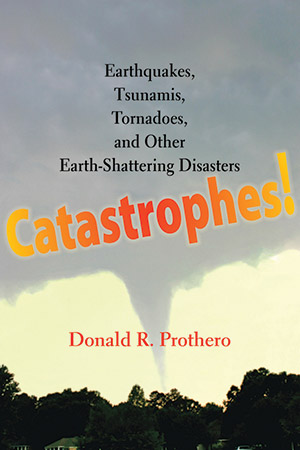
Order the hardcover from Shop Skeptic
Order the hardcover from Amazon
Order the Amazon Kindle Edition
Order the audiobook from Amazon
Order the audiobook from iTunes
The year 1815 was an important one in history. On January 8, the Battle of New Orleans ended the War of 1812—even though it was fought AFTER the treaty ending the war had already been signed in 1814. (Communications across the Atlantic were very slow in those days.) In February, Napoleon Bonaparte escaped from exile on the isle of Elba, raised another huge French army, took control of France, and ruled for 100 days. Then he was defeated at the Battle of Waterloo on June 18, and ended up in his final place of exile on the remote Atlantic island of Saint Helena, where he passed the remainder of his days. Soon the French throne returned to the royal family with the rule of Louis XVIII. Less known at the time was the publication of the first geologic map by the humble canal engineer, William Smith, which has been called “the map that changed the world.”
April 10 was also the 200th anniversary of a momentous event in geology, and in human affairs: the eruption of Mount Tambora. It is the largest volcanic eruption in recorded human history, much bigger than the enormous eruption of Mt. Krakatau in 1883, or the much smaller eruptions of Mt. Saint Helens in 1980 or Mt. Vesuvius in 71 A.D. Mt. Tambora is on the island of Sumbawa, in the Indonesian Archipelago, east of Java. Indonesia is home to hundreds of active volcanoes. (Krakatau is west of Java, in the Sunda Strait between Java and Sumatra). There was an even larger eruption of Mt. Toba in northern Sumatra 71,000 years ago, which nearly wiped out humans on this planet, but there are no historical records of this ancient event.
TAGS: climate change, Tambora, tsunami, volcanoLoch Ness Silliness
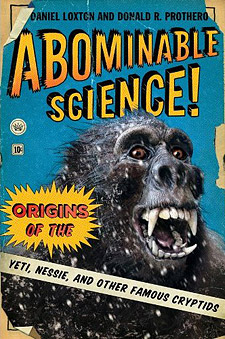
Order the hardcover from Shop Skeptic
Order the hardcover from Amazon
Order the Kindle Edition
Order the Apple iBook
The legend of the Loch Ness monster is one of the most popular and enduring of all the tall tales of cryptozoology—and ironically, one of the most easily debunked as well. In our book Abominable Science!, Daniel Loxton and I laid the entire myth to rest about as conclusively as one can debunk something. Yet it still manages to drum up publicity on a regular basis, routinely appearing in news items that demonstrate how bad ideas just won’t die—and how journalists manage to keep paranormal and pseudoscientific ideas going, rather than doing their jobs as reporters, checking facts, and viewing their sources critically.
One recent news item can be listed as a classic “Journalism 101 FAIL.” A regional paper called The Scotsman ran an article claiming to have found the fossil of Nessie’s “great granny.” It is full of head-slapping howlers that make any geologist or paleontologist cringe at the ignorance of the reporter who ran the story. Loch Ness monster enthusiast Gary Campbell is featured (as he has often appeared in other silly Nessie stories from supposedly reputable news organizations), along with Dr. Evelyn Gray and archeologist Cait McCullagh, a curator at the Inverness Museum and Art Gallery. Following Campbell’s lead, The Scotsman makes a big fuss about a Devonian fossil fish called Pterichthyodes milleri, from the Old Red Sandstone in the area, collected by the pioneering fossil collector Hugh Miller back in the 1830s and resting in the collection of the Inverness Museum. Apparently ignorant of every aspect of paleontology and geology, Campbell and the gullible reporter claim this fish is an ancestor to “Nessie,” offering “evidence that she exists and that her relatives populated the Highlands in prehistoric times.” Instead of using the fossil animal’s proper name, they’ve nicknamed it “Pessie.”
TAGS: cryptozoology, fossils, Loch Ness, monstersStranger Than Fiction: A Review of the HBO documentary, Going Clear: Scientology and the Prison of Belief
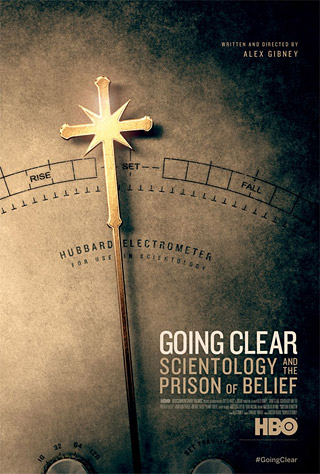
Promotional poster for Going Clear (2015), from HBO Documentary Films
“You don’t get rich writing science fiction. If you want to get rich, start a religion.”
On March 29, HBO aired its highly anticipated documentary, Going Clear: Scientology and the Prison of Belief. (US readers may view a trailer here.) The television premiere received huge media attention, provoking an escalation of the Church of Scientology’s already gigantic PR counter-attack. Having previously taken out full-page advertisements against the film in the New York Times and other papers, Scientology took the battle online using paid promotional tweets and (as discussed by INSIGHT’s Tim Farley) targeted Google ads. This ferocious media storm is a sure sign that they view the film as a threat to their world (and their fears are justified). Ironically, their ham-fisted onslaught on Twitter and other media just gave the film more publicity, and made more people want to see it. Someone in the Church should look up the “Streisand effect”!
TAGS: cults, David Miscavige, L. Ron Hubbard, media, religion, Scientology, Tom CruiseAnnus Mirabilis
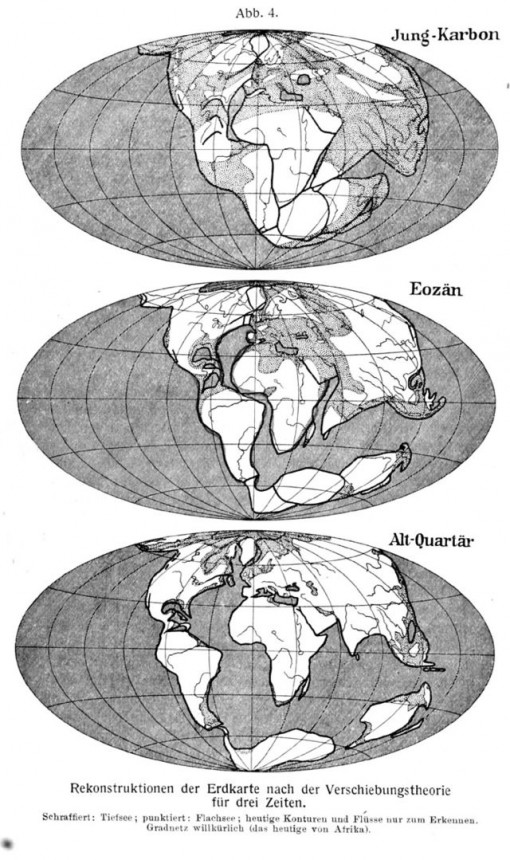
Alfred Wegener’s 1915 reconstruction of the drifting of the continents from a supercontinent of Pangea to today. (Courtesy Wikimedia Commons).
Every year of the 20th century included many scientific breakthroughs and achievements, but few years were as important as the year 1915—one hundred years ago this year. It seems odd that it stands out as such a watershed. World War I had broken out the previous August with the rapid German advance through the Low Countries and northern France and almost to Paris, then been beaten back by an Allied counteroffensive. By the beginning of 1915 the Allied and Axis lines across Belgium and northern France were deeply entrenched, and they would barely budge for three more long years of pointless slaughter. Yet despite these horrific events, science marched on. In physics, Einstein published his theory of general relativity, which gave us the concepts of space-time and warped space. His theory also successfully explained the peculiarities in the apparent motions of Mercury. (However, the paper was not widely read for a while because of wartime restrictions on circulating scientific publications). Ada Hitchins established the first radioactive decay series, showing that radium was a decay product of uranium. Pluto was photographed for the first time, although not yet recognized as a planet. Thomas Hunt Morgan demonstrated non-inherited genetic mutations in fruit flies, undermining the foundation of eugenics. The Nobel Prize in Physics went to the Braggs for their development of X-ray crystallography, which became important not only in geology but also was the key to unlocking the structure of the DNA molecule and many other scientific discoveries.
TAGS: Alfred Wegener, continental drift, geology, plate tectonics, science, scientific revolutionWillie Soon Be Gone?

In the past few weeks, there has been a tremendous furor over the disclosure of the ethics of a noted climate denier, Wei-Hock “Willie” Soon. He has been one of the “stars” of the climate denial lobby, spending most of his time speaking to right-wing media and denialist groups, and being promoted by prominent denialist politicians like Sen. James Inhofe (R-OK). Even though the problems with his research, and with his funding, were public knowledge for many years, it made news because of recent discoveries revealed by the New York Times of just how much money he was paid for his work. His situation is even more problematic because he failed to report this funding in his publications and signed “conflict of interest” statements that he then violated. Naturally, the denialist institutes and right-wing media have fought back and defended their man, and Soon himself made a statement (brilliantly dissected by Greg Laden) to the press in his own defense. But the facts of the case seems incontrovertible, no matter what you might think of the climate change debate, and it appears that serious consequences will be forthcoming.
Poes, Trolls, and Dinosaur Deniers
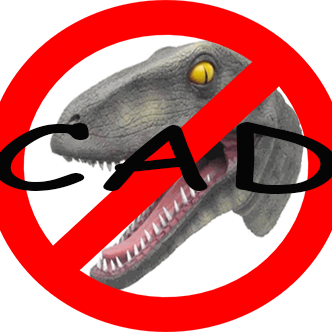 For the last week or so, a site for a group calling itself “Christians Against Dinosaurs” has gone viral, and at least a dozen of my Facebook friends have forwarded it to me in surprise, curious as to whether I’d seen it and if it is real. It managed to get covered in the Huffington Post, in Guff.com, and in several other online media outlets, giving it even more exposure. The site claims that dinosaurs (and fossils in general) are a lie to undermine our Christian faith, and that fossils seen in museums are faked or sculpted out of rock by “Big Paleo” trying to make millions by fraud. Prominently featured on the site and on Facebook and YouTube are short videos by a young woman who makes these very claims, and argues that paleontologists fabricate fossils out of the rock to look like animals. Even more shocking and hilarious, she seems to think that such faked fossils are worth millions of dollars and keep “Big Paleo” afloat. (If only she knew how impoverished most paleontologists are, and how there is no money in paleontology!). As Guff.com described it:
For the last week or so, a site for a group calling itself “Christians Against Dinosaurs” has gone viral, and at least a dozen of my Facebook friends have forwarded it to me in surprise, curious as to whether I’d seen it and if it is real. It managed to get covered in the Huffington Post, in Guff.com, and in several other online media outlets, giving it even more exposure. The site claims that dinosaurs (and fossils in general) are a lie to undermine our Christian faith, and that fossils seen in museums are faked or sculpted out of rock by “Big Paleo” trying to make millions by fraud. Prominently featured on the site and on Facebook and YouTube are short videos by a young woman who makes these very claims, and argues that paleontologists fabricate fossils out of the rock to look like animals. Even more shocking and hilarious, she seems to think that such faked fossils are worth millions of dollars and keep “Big Paleo” afloat. (If only she knew how impoverished most paleontologists are, and how there is no money in paleontology!). As Guff.com described it:
TAGS: creationism, dinosaurs, evolution, internet, Poe, science denial, troll“A fossil is not actually a piece of bone,” she says in the video. “It’s actually a bone that was once in the ground that has been filled with limestone, calcium, and other stone-like deposits, so at the end of the day, it’s a rock made out of rocks. So, you have a rock that’s [six-inches long] and you hand it to a paleontologist, who chips away at it until you have something looking like a bone — and that is a fossil,” she continues. After covering a table with broken pieces of…something, she tells viewers to pretend they are paleontologists (ooh, activity time!) and put the shards back together in their original form. She even offered some spackle to assist in the reconstruction. But, she says, it’s supposed to be a brachiosaurus skull — and “If you’re a paleontologist and you want to keep your job, you turn that into a brachiosaurus skull.”
A Tale of Two Debaters
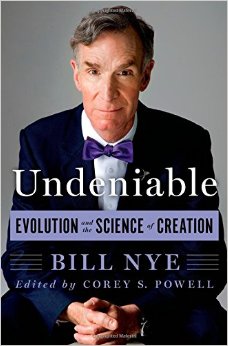
View Undeniable listing at Shop Skeptic
As we celebrate the 206th anniversary of the birth of Charles Darwin today (Feb. 12), there is both good news and bad news in the continuing culture war over evolution. First, the good news. In a number of places, our political representatives have placed motions on the floor of Congress and several state legislatures to recognize February 12 as Darwin Day. Given the aversion to even the mention of evolution by most politicians today (even those who accept it, but don’t want to alienate creationists), this is very encouraging sign. But of course, this bit of good news is countered by the fact that creationist bills keep cropping up all the year round (see the NSCE website for a litany of recent rashes of creationist attacks). In the school districts of Louisiana, Tennessee, and several other states, there are backdoor ways to introduce creationism into public school science classes, or at least to cast doubt on evolution. This problem never seems to end, although there are good signs in the current polls that the younger generation (especially the millennials) are becoming more and more secular, and reject religious fundamentalism and creationism. Over the long term, that is very good news, because the creationists are no longer growing in numbers, but losing the next few generations and may be doomed to becoming a tiny minority with limited political influence in another generation.
TAGS: Charles Darwin, creationism, debate, evolutionScam Science Journals and “The Simpsons”

Baby Maggie Simpson and Mrs. Krabappel doing science. (Original art by former “Simpsons” animator Anna Maltese, used with permission).
Several times a week my email inbox contains offers to contribute to journals in subjects like engineering and agricultural sciences and in many other fields. The emails look legit, but my red flags go up nonetheless. I’m not an engineer, nor do I work in agriculture, or most other fields. I’m a geologist and paleontologist, and I teach geophysics, astronomy, oceanography, and meteorology, but I don’t work in every field of science. Clearly, my email address (which I willingly gave to legitimate scientific organizations) has been added to a compilation of scientists’ email addresses and sold and now every scam “journal” will spam me with these emails, not worrying about whether their “journal” is in my field or not.
TAGS: junk journals, peer review, scientific publicationIn the Valley of the Shadow of Death
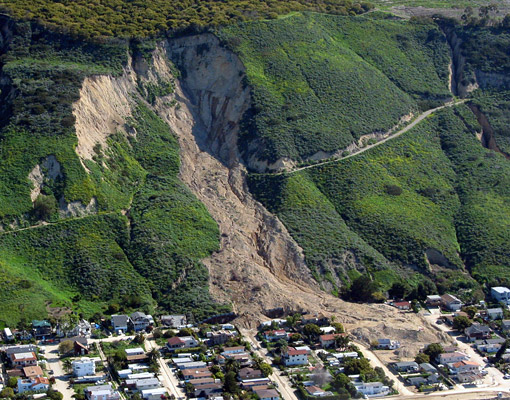
Aerial view of the La Conchita landslide after the 2005 event. (Photograph by Mark Reid, courtesy of the U.S. Geological Survey.)
Civilization exists by geological consent, subject to change without notice.
The mountain is coming down!” he shrieked. Standing directly underneath the tumbling hillside, hearing its terrible crackle and roar and watching a plume of earth spew toward the sky, the men broke and ran for their lives … He lost sight of the others as the hillside bore down. Out of the corner of one eye, he could see a house and a trailer in hot pursuit.
Ten years ago today, the tiny coastal town of La Conchita, California, experienced a terrible tragedy. The winter of 2004–2005 was unusually wet in Southern California. Many places in the steep mountains behind the urban belt had flooded and experienced landslides. Huge amounts of rain had fallen in the last weeks of December and the first weeks of January. In the sleepy coastal town of La Conchita, there was no reason to think that the winter rainy season would be unlike any other. La Conchita consisted of a few dozen houses with about 300 residents, located right on the coast on Highway 101 between the wealthier communities of Santa Barbara and Ventura. La Conchita was much more laid-back and inexpensive, with small beach cottages inhabited mostly by retired surfers, artists, beachcombers, and hippies who savored their pleasant beachfront life without Santa Barbara’s high prices and congestion.
TAGS: landslide, natural disaster, risk assessmentA Tsunami to Remember
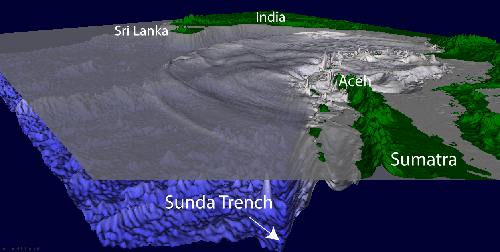
Digital image showing cross section of the Java or Sunda trench, and the wave heights of the tsunami (gray peaks near the shoreline). (Courtesy USGS).
Today, December 26, 2014, is a somber anniversary. Ten years ago today, during the Christmas holidays, the southern regions of Thailand and the north coast of Sumatra was heavily populated, and also crowded with tourists seeking relief from Northern Hemisphere winters by enjoying the sun and pristine beaches. It was the day after Christmas (Boxing Day in the British calendar) when a violent earthquake struck 160 km (100 miles) off the northwest coast of Sumatra. It had a moment magnitude of 9.2, the second largest earthquakes ever recorded on a seismograph, and lasted between 8 and 10 minutes, the longest duration of shaking ever observed. The entire region vibrated by as much as 1 cm (0.5 inches), and triggered sympathetic earthquakes as far as Alaska. As the Indian plate is pushed under the Burma plate, it produces a huge subduction zone that is responsible for the island nations of Indonesia and Malaysia. The fault line of this plate boundary formed a rupture about 400 km (250 mi) long and 100 km (60 mi) wide, which was located 30 km (19 mi) beneath the seabed—the longest rupture ever caused by an earthquake. The energy released by the quake was about 550 million times more powerful than the A-bomb that wiped out Hiroshima. CONTINUE READING THIS POST…
TAGS: earthquake, natural disasters, tsunamiFlawed Scientific Geniuses on the Big Screen

Benedict Cumberbatch, left, portrays Alan Turing in The Imitation Game (Image: STUDIOCANAL); Eddie Redmayne, right, stars as Stephen Hawking in The Theory of Everything (Image: Liam Daniel / Focus Features)
A review of two new movies: the Stephen Hawking biography The Theory of Everything, and the Alan Turing biography The Imitation Game.
2014 has been a relatively good year for science in the public eye. At the beginning of the year, we had Bill Nye’s victory over creationist Ken Ham, and two outstanding TV series, Neil DeGrasse Tyson’s Cosmos, and Neil Shubin’s Your Inner Fish. In all three cases, leading American popularizers of science managed to get a lot of publicity for good science. They also were successful in striking blows against various forms of pseudoscience, which are still pervasive in the media (especially on basic cable channels like Discovery and TLC, which ran “fake-umentaries” this year about living gigantic sharks, living mermaids, killer yetis, and even a guy promising to let an anaconda swallow him—then reneging). Now the year is coming to an end with two outstanding biopics about two of the most brilliant British mathematicians and scientists of the mid-late twentieth century, cosmologist Stephen Hawking (The Theory of Everything), and mathematician/cryptanalyst/computer pioneer Alan Turing (The Imitation Game). In both cases, the movies are outstanding, not only in their acting, writing, directing, and cinematography, but especially their relatively accurate and sympathetic portrayal of science and scientists, with all its struggles and triumphs.
TAGS: Alan Turing, cinema, mathematics, media, physics, Stephen HawkingFake Pterosaurs and Sock Puppets
Order the hardcover from Shop Skeptic
Order the hardcover from Amazon
Order the Kindle Edition
Order the Apple iBook
When Daniel Loxton and I were doing the research for our book on cryptozoology, Abominable Science, we tracked down monster myths that had been handed down over decades by many different authors. In some cases the back trail for these legends peters out after just a few decades; in other cases, the inspirations for modern cryptid legends may be traced back centuries to the myths of Indigenous Peoples or the artistic expressions of millennia past. No matter the sources, they all ended up in books which indiscriminately compiled every cryptid legend as if they all had robust, plausible histories and back-stories. As we found out, most of the pivotal “sightings” of even the best-attested cryptids were indeterminate or questionable or outright hoaxes, yet they kept on being repeated by the cryptozoology community no matter how doubtful or discredited they were. There was no quality control or careful examination of the reliability of these reports, just stockpiling them all as if they all counted equally. In the end, we recommended that the cryptozoology community needed to get their house in order and weed out the garbage accounts and obvious hoaxes before any scientist would take them seriously.
TAGS: cryptid, cryptozoology, internet, Jonathan Whitcomb, ropen, sock puppets

